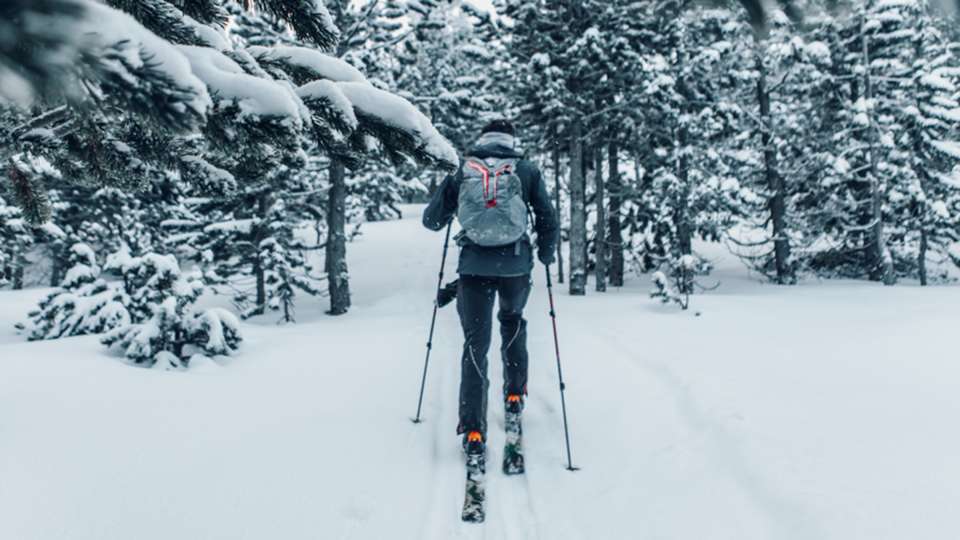
You don’t need to love extreme sports—or even go far from home—to have an Olympics-style winter adventure.
Cross-country skiing, also called Nordic skiing, is a full-body aerobic workout that rivals cycling, downhill skiing and swimming in its cardiovascular- and endorphin-boosting abilities, says Catherine Braden, D.P.T., a physical therapist at the UW Medicine Sports Medicine Center at Husky Stadium.
“It’s something you can learn in a day and at least be functional at,” says Braden.
Interested in giving cross-country skiing a try? Here’s what you should know before you get started.
There’s something for everyone
Before you head to the mountains, you should know that there are two styles of cross-country skiing: classic and skate skiing.
The classic style of Nordic skiing is probably what you picture when you think about the sport: skis moving parallel to one another, almost as if the skier is walking with skis on their feet. It’s the more relaxed of the two styles but is still physically challenging, Braden says. You can enjoy this style on groomed trails or on trails with cross-country tracks that keep your skis in line.
The motions in skate skiing are similar to ice skating in that you need to angle your skis into a V, pushing off one ski while shifting your weight to the other side, and then switching back and forth. Since your skis aren’t moving in a straight line, this style requires groomed trails and can’t be done in tracks.
If you’re a runner or an endurance athlete, skate skiing can be a fantastic cross-training activity that can help you stay in peak shape while also enjoying all the healthy benefits of being outside in the winter months, says Braden.
Good form is key for a total body workout
While many folks can get somewhat competent at cross-country skiing in a day, Braden says she always suggests signing up for a lesson or learning from an experienced friend. That’s because skiing with good form ensures you aren’t putting too much stress on one muscle group or putting your knees at risk for injury.
With proper form, both skate skiing and classic cross-country skiing are great exercises for the glutes, says Braden. Skate skiing also strengthens the hip muscles, especially the external rotators of your hip, which are generally underutilized in running. This is why it’s such good cross-training.
“I love when my runners skate ski because their glutes are on board,” she says.
The biggest form mistakes people make involve the knees: either dropping them in toward one another or letting them fall too far in the opposite direction. Your knees should be pointing forward and be in alignment with your ankles, Braden explains.
You’ll also use your upper body, including your triceps and abdominals for stabilization during the pulling motion with poles.
Cross-country skiing in Washington
Lucky for us who live in the Seattle area, you don’t have to go far from home to enjoy a day or weekend of cross-country skiing. And depending on conditions, you can often plan on getting out on the trails well into April. From the popular Nordic Center at Stevens Pass to the massive and well-loved Methow Trails in Methow Valley, there are tons of options for exploring new places and trails within a few hours of home.
Most ski areas have equipment for rent, or you can head to a local ski shop for rentals or to purchase your own gear, suggests Braden.
Check out the Washington Trails Association’s Guide to Cross-Country Skiing for a list of the best places to cross-country ski in the state and the passes you’ll need to enjoy them. Then, make like Team USA and hit the trails.

 Healthy ideas for your inbox
Healthy ideas for your inbox





